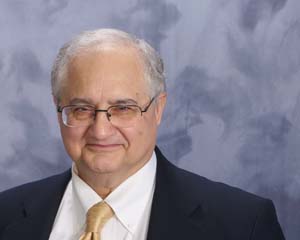Introduction to Distance Education: Theorists and Theories — Charles Wedemeyer
Charles A. Wedemeyer was born in Milwaukee, Wisconsin in 1911. His education included a Bachelor of Science in Education with a major in English and a Masters in Education both from the University of Wisconsin-Madison. World War II interrupted his doctoral studies; however, he was awarded honorary doctorates from Oxford University and University of Ethiopia.
Wedemeyer championed the cause of the independent learner and established several theoretical constructs that have constituted the core of the contemporary theory of distance education. Among these constructs are autonomy or the learner’s need for independence to participate in deciding his/her learning objectives, select the strategy and the means to achieve such objectives, and demonstrate his/her mastery of the chosen objectives. In subsequent theoretical work, Dr. Michael G. Moore, incorporated the idea of learner autonomy in the theory of transactional distance. In Moore’s theory, distance in education is determined by learner’s autonomy as manifested in the control s/he requires in the process of learning, and structure as manifested by instructor control of the teaching process. Moore postulated that more instructor control (structure) leads to increased distance, and more autonomy leads to decreased distance between the instructor and the learner.
Wedemeyer also realized that ubiquity of instructional telecommunication would lead to learning anytime and anyplace. Today, with the extensive of use of the Internet in education the idea of learning anytime, anyplace is taken for granted. However, in the early days of experimentation with electronic media, Wedemeyer envisioned the role that the telecommunication technology could play in offering non-formal education and thus increasing the freedom of the leaner to learn when and where s/he is ready to learn. The University of Wisconsin’s website “About Wedemeyer” states that in 1965, Wedemeyer predicted today’s e-Learning by making the following observations in Brandenburg Memorial Essays:
- “…the extension student of the future will probably not ‘attend’ classes; rather, the opportunities and processes of learning will come to him. He will learn at home, at the office, on the job, in the factory, store, or salesroom, or on the farm.”
- “…the teacher will reach students not only in his own state or region but nationally as well, since the media and methods employed by him in teaching will remove barriers of space and time in learning…”
Another important contribution of Wedemeyer to the theoretical development of distance education emerged while he was implementing the Articulated Instructional Media Project (AIM) as the Director of Correspondence Education at the University of Wisconsin-Madison.
“In this, Wedemeyer demonstrated that by deconstructing the teaching process into specialties, employing specialists to work on each as members of a teaching team, and connecting (i.e., ‘articulating’) a variety of communications media to deliver the program, the quality of programs would exceed what could be provided by individuals working alone, or that could be delivered by any one medium (Wedemeyer & Najem, 1969). Of monumental importance in the history of distance education, Wedemeyer’s ideas were incorporated into the design of the revolutionary new Open University of the United Kingdom (UKOU), the first publicly funded, national, autonomous, degree-granting, distance teaching university.” (Black, 2013).
This approach opened the way for developing the systems theory of distance education. Wedemeyer conceptualized distance education organizations as a group of professionals who were engaged in processes ranging from the design of instructional programs to their development, production, implementation and evaluation. The work of each professional had an effect on all the the others and each professional’s work was affected by the others as they worked in a “course team.” Inspired by Wedemeyer and Moore, I proposed the systems theory of distance education as a group of people who worked with software, hardware and telecommunications technology to create instructional programs within educational institutions in relation to societal demand for such programs under the conditions required by globalization of learning and teaching. This complex system was self-organized and provided not only for attaining predetermined learning objectives by learners, but also allowed for learners’ emergent behaviors to manifest.
REFERENCES
Black, L. (2013). A history of scholarship. In M. G. Moore, Handbook of distance education (3rd Ed.). (pp. 3-20). New York, NY: Routledge.
Wedemeyer, C. A. & Nejam, R. (1969). AIM: From concept to reality: The Articulated Instructional Media Program at Wisconsin. Syracuse, NY: Syracuse University Press.
University of Wisconsin-Madison, (2014). About Charles Wedemeyer. Retrieved from http://www.uwex.edu/disted/conference/wedemeyer/aboutcw.cfm








